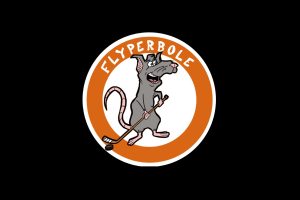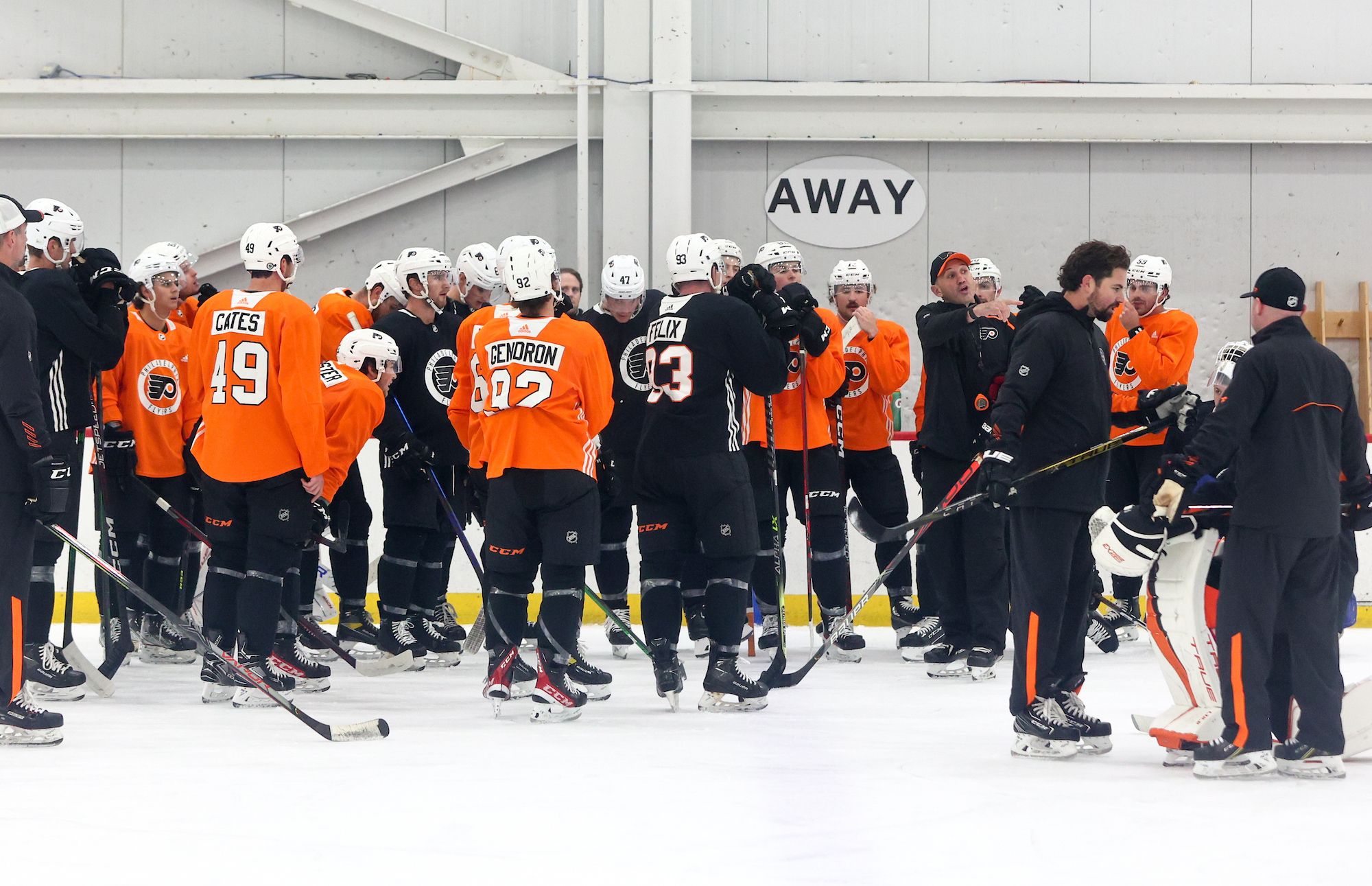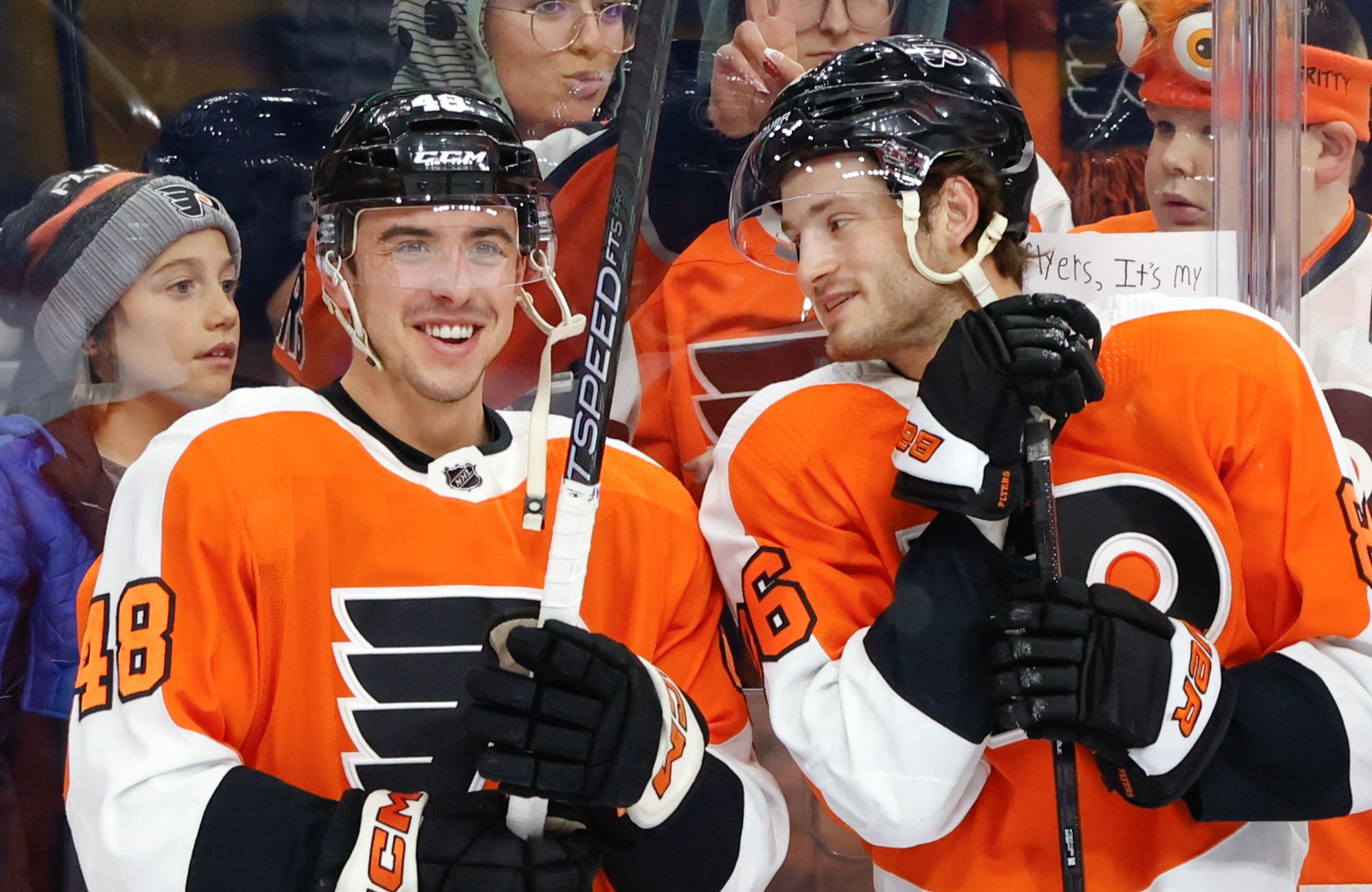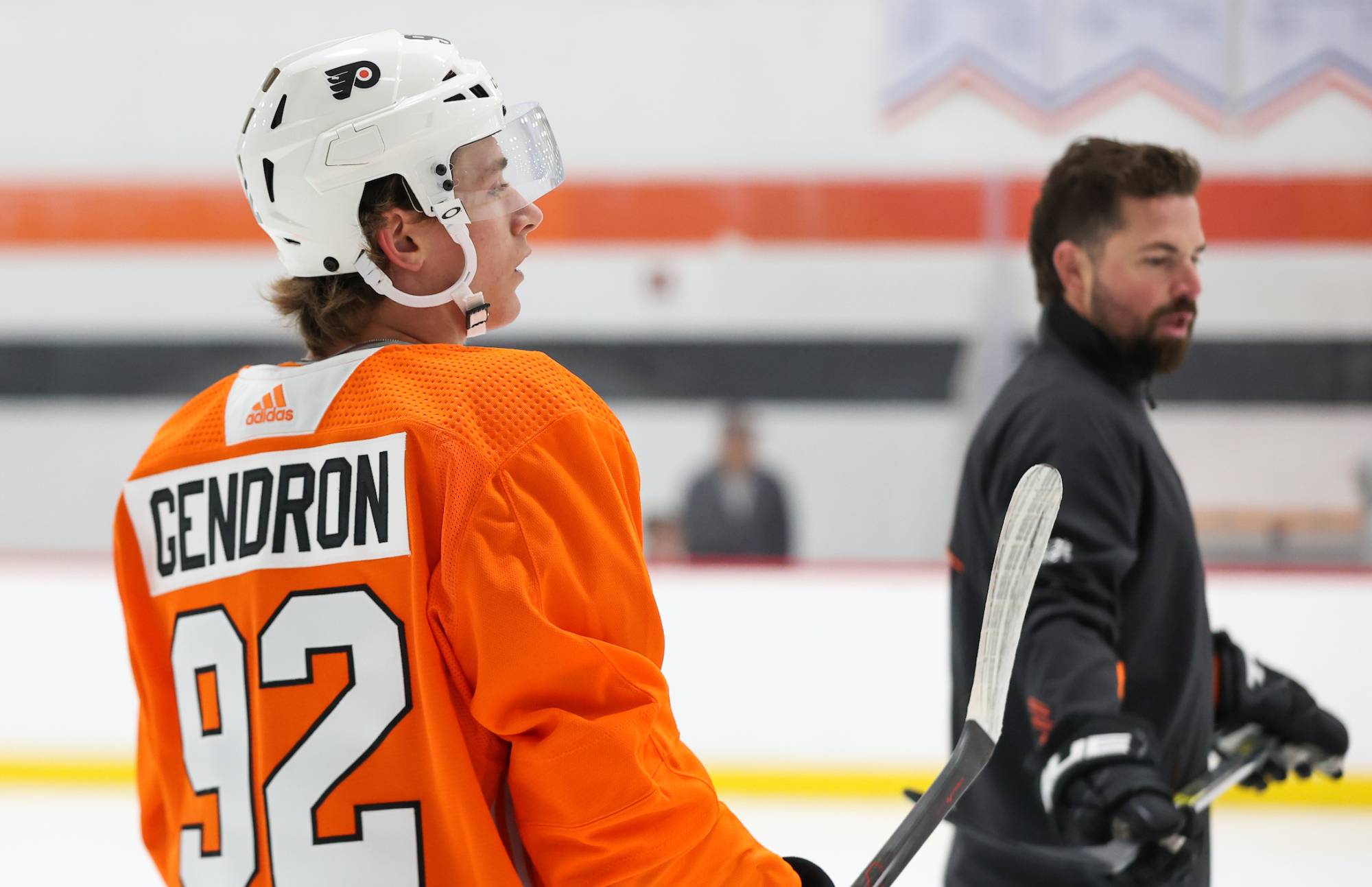Morning Observations is a feature where we break down the previous night’s game with an analytical eye.
#1: Flyers had a game like this coming
A 3-5-2 month of January certainly doesn’t inspire much optimism regarding the Philadelphia Flyers at first glance. Once solidly in a playoff spot following a 10-game winning streak, the Flyers’ poor results since mid-December have moved them right back onto the bubble, and simultaneously tested the fanbase’s patience. However, it wasn’t all doom & gloom for the team. Despite the poor win/loss record, the Flyers’ performance in terms of advanced metrics was strong — they were driving play at 5v5, racking up tons of shots on the power play, and even were posting middle-of-the-road shot suppression rates on the oft-criticized penalty kill. In a number of contests this month (Anaheim, Buffalo and New Jersey especially), Philadelphia failed to come away with two points despite thoroughly outplaying their opponent. It seemed like the luck would never turn.
Last night, the bounces finally went the Flyers’ way. Despite being outshot 34-26, losing the score-adjusted Corsi battle at 5v5 handily (42.35%) and not doing much better in all-situations Expected Goals (43.01%), Philadelphia came away with the 2-0 victory over a solid Rangers club. Steve Mason was obviously the main reason for the win, as any goalie who delivers a shutout when his team is outshot usually is. But the Flyers’ goals were not highlight reel snipes or beautiful passing plays. Instead, Philadelphia scored them due to a large helping of good luck. Simmonds’ goal came courtesy of a netfront scrum and a puck that just barely found its way to him, and while Voracek’s tally was more of an own goal on the part of Michael Grabner and the Rangers.
That’s not to say that the plays were entirely luck-driven. Voracek had a fantastic individual puck carrying effort to muscle his way into the slot and create the opportunity for a bouncing puck on his goal, and it was crisp power play puck movement that allowed for the initial shot that caused the traffic in front on goal #1. The Flyers did, in a sense, create their own luck. At the same time, this was a game that Philadelphia probably should have lost, and you couldn’t help but feel that this was some kind of karmic justice for January losses like the ones against Anaheim and New Jersey.
#2: Mason was the hero
It’s no secret that Steve Mason is having a poor season thus far in 2016-17. After three straight above-average years with the Flyers, Mason’s performance this season has been far more reminiscent of his awful years in Columbus than anything the netminder has delivered during his Philadelphia career. Sure, the defense has failed him on a number of occasions. But even accounting for context didn’t excuse Mason’s 0.899 save percentage entering last night, which was ghastly no matter which way you sliced it.
Against the Rangers, however, the Flyers got to see the Steve Mason who helped carry them to a 10-game winning streak in December. New York blasted 34 shots at Mason and generated 3.52 expected goals on the night, yet the Flyers’ netminder stopped every one of them. And this wasn’t a game filled with tons of easy Rangers shots from the outside, either. Mason made more than his fair share of high-difficulty saves, including two huge stops on sniper Rick Nash (one on a two-on-one, another on a mini-breakaway). He also had a strong game on Sunday night against the Islanders (0.947 save percentage), so last night’s performance didn’t exactly come out of nowhere. It’s only two games, but Flyers fans would be forgiven if they start to hope that Mason may be getting on a another hot streak at just the right time.
NHL.com Report & Highlights | Corsica.Hockey Game Recap Page | HockeyStats.ca Recap | NaturalStatTrick Recap | HockeyViz.com | BSH Recap | Meltzer’s Musings
#3: Flyers did earn it in the third period
Over the game’s first two periods, Philadelphia was absolutely buried in terms of raw shot attempts, but a combination of great goaltending by Steve Mason and solid defensive zone coverage that generally kept the Rangers out of the slot despite loads of possession time kept the contest at a 0-0 deadlock. It’s a cliche, but entering the final period of play, the Flyers had the opportunity to reset and essentially buy into the maxim of “win a period, win a game” despite their poor play thus far. To the team’s credit, they did just that, putting aside their struggles to come out of the second intermission and deliver a solid performance.
It wasn’t merely the two goals that made the third period their best of the night. It was also the only twenty-minute session of the game where Philadelphia wasn’t defeated from a territorial standpoint, even though the Rangers were trailing for the bulk of the period. The Flyers led in 5v5 score-adjusted Corsi with a 52.1% rate in the third, and won the overall high-danger scoring chance battle 5-2. It wasn’t like Philadelphia dominated the period, but they found a way to stop the bleeding of the opening 40 minutes and then benefit from some good fortune to steal a win. They did it by finally exerting their authority in the offensive zone, generating a number of extended cycles and forechecks, which kept the Rangers from taking up residence in the Flyers’ half of the ice due to their very-effective forecheck. Philadelphia still had some rough moments in the third, but their ability to spend entire shifts on the attack slowed the pace of the game, to their benefit.
#4: Rangers’ forecheck buried the Flyers last night
There were a number of reasons why Philadelphia struggled to create much of anything over the first forty minutes, but most of the issues stemmed from a very effective Rangers’ forecheck. During the first two periods, the Flyers simply could not exit their own zone cleanly, which resulted in New York racking up 25 shots on goal and 50 total attempts at 5v5. It was a territorial slaughter.
It’s a good time to note that in a game like this, performance in all three zones is interconnected. The Flyers almost certainly “lost” the neutral zone last night, but it wasn’t because their passing in the middle of the ice (or even their defense there) was especially poor. Because the Rangers’ forecheck was so effective, Philadelphia struggled to exit their zone, usually failing on a few occasions before blindly chipping the puck out in order to earn a line change. That allowed New York to gather the loose puck in the neutral zone, and immediately re-enter on the attack. After a while, the entries start to add up, and one bad shift turns into five. Then, on the rare occasions the Flyers did get in on the attack, their own forecheck was impotent, allowing for the Rangers to easily exit the defensive zone and then re-start the previous cycle. The Flyers were finally able to break it late in the second period by actually sustaining some offensive attack, which let them bypass NYR’s aggressive forecheck entirely. It wasn’t like Philadelphia became miraculously better at passing in the defensive zone under pressure in the third period, though. They just had to do it less often.
#5: Power play was due
Considering the Flyers’ goal-scoring struggles in January, a large portion of the blame had been placed on the power play for not bailing out the team as they did in the early portion of the year. The criticism wasn’t totally fair — going into last night’s game, the PP had a 20% efficiency rate for the month — but the power play certainly hadn’t picked up all of the slack. Their January Goals For per 60 rate of 4.80 ranked the Flyers 19th in the NHL during 5-on-4 situations, which is certainly not an area that the team expects to sit (even for short periods) considering their high-end PP talent.
Luckily, the low goal totals were unlikely to sustain. Despite their middling ranking in GF60, the Flyers had averaged more shot attempts (per 60) at 5v4 than any other NHL team in January, and were second in Expected Goals For per 60 as well. The process was fine, as usual, but the bounces just weren’t going the team’s way. That changed last night, as Wayne Simmonds’ tally proved to be both the gamewinner and the gamechanger, and was more the result of overwhelming volume than a picture-perfect tally. That’s the benefit of having a high-volume power play — when the team isn’t clicking well enough to create highlight reel goals, they can still pick up some garbage tally through sheer quantity.
#6: Couturier line only one to carry play
There was a great deal of criticism thrown Sean Couturier’s way during this game, mostly sparked by a two-on-one break early that saw the center be caught from behind by Kevin Klein despite a big head-start and barely even get off a shot. That reignited the “Couturier can’t score!” and “trade Couturier!” chatter that has become a constant buzz from corners of the fanbase over the past few seasons. And like most split second reactions, there is some truth to the concern. Couturier isn’t a great goal scorer, nor is he especially fast, particularly when his game lacks decisiveness (as it did on that odd-man rush). However, it’s amusing to me that Couturier received so much criticism in a game that saw his line be the only one that wasn’t totally destroyed at 5v5.
The current “second” line of Couturier, Matt Read and Nick Cousins isn’t exactly teeming with high-end offensive talent. Despite that, all three forwards finished with score-adjusted Corsi percentages over 67%, and generated eight high-danger chances together while allowing zero. Of course, this hints at the main issue that many have with Couturier — none of those chances turned into goals (although Couturier was on the ice for Voracek’s tally and earned a primary assist). But I struggle to reconcile the belief that Couturier is terrible offensively with the undeniable truth that over the past three years, only Travis Konecny has been on the ice for more Flyers goals (adjusting for ice time) at 5v5 than Sean Couturier. Sure, he may not score the goals, or even rack up points on an especially high percentage of them. But he’s facilitating offense when he plays hockey at 5v5. Shouldn’t that be enough?
#7: MacDonald’s role is growing, not shrinking
Any hopes that the bye week would give the Philadelphia Flyers time to re-evaluate their usage of the defensemen on the roster and come to the conclusion that the team is drastically outshot when Andrew MacDonald hits the ice at 5v5 have been quickly dashed. In fact, it’s been the opposite. In three games since the bye, MacDonald has ranked second, first, and first again on the defense in 5-on-5 ice time, and has never been below third in overall minutes per game on the blueline. Last night, he received a whopping 19:09 minutes at 5v5, and 23:40 minutes total.
By all of the play-driving metrics, MacDonald is the worst regular defenseman on the team. His 47.5% Corsi For percentage is a defense-low, as is his -5.6% Corsi For% RelTM rating. Last night’s game followed the usual script — a 29.95% score-adjusted Corsi (again, worst on the defense), and some glaring mistakes that were erased by strong play from Steve Mason, including an awful defensive zone turnover with time running down in the first period.
So why is MacDonald seeing his role increase? It’s impossible to know for sure what is driving the trust, but my guess is that it has something to do with his decent on-ice goal rates. His 45.6% Goals For percentage at 5v5 is behind only Provorov among regular Philadelphia defensemen, and no blueliner has been on the ice for fewer goals against per 60 than MacDonald. Compare that to Gostisbehere, who is driving play at a high rate but has a very poor on-ice goals percentage (34.7%) that may help to explain why he’s being used as a third-pair defenseman by Hakstol right now. The interesting part of this is that Hakstol wasn’t fooled by goal-based results last year in his treatment of Michael Del Zotto, who posted a 37% Goals For rate but was still used in a first-pair role up until his injury. Hakstol seemingly recognized that it was mostly bad luck driving down Del Zotto’s goal results, and distributed ice time accordingly. For MacDonald and Gostisbehere, however, that doesn’t seem to be the case. Call it a blind spot.
#8: Bellemare line got torched
Coming off a solid performance on Sunday night against the Islanders, the Flyers’ fourth line of Pierre-Edouard Bellemare, Chris VandeVelde and Roman Lyubimov were absolutely bulldozed by the Rangers last night. In over seven minutes of 5v5 ice time, the trio was not together for even one Philadelphia attempt, meaning that they couldn’t even muster a weak blocked shot from the point. They basically spent the entire game in the defensive zone, bleeding shots against (15 for Bellemare, 14 for VandeVelde, 10 for Lyubimov) and scoring chances. VandeVelde and Lyubimov actually finished with Corsi For percentages of 0.00%, which even in limited minutes, is pretty hard to pull off.
#9: Penalty kill was quite effective
Considering the fact that the Flyers won in a shutout, it’s not exactly a bold statement to say that the penalty kill performed well in this one. The Rangers had three opportunities and came up empty on each. However, a penalty kill can deliver strong single-game results on the shoulders of a hot goalie, which Steve Mason certainly was last night. He received a ton of help last night from the penalty kill, though. No Flyers penalty killer was on the ice for more than three shot attempts, with Brandon Manning delivering the best results (zero shot attempts against in over two minutes of PK time). In fact, in six overall minutes, Philadelphia permitted just two scoring chances by New York, and even created a high-danger chance of their own on a shorthanded rush. Mason only had to make three stops on the PK, as his teammates made life pretty easy for him.
#10: Flyers seem to be attacking the slot more
I noted last week that the Flyers seemed to be employing a low-to-high strategy as their primary option in the offensive zone, blasting away from the points in an attempt to create deflections and rebounds rather than attacking the slot directly with passes. That changed against the Islanders, as Philadelphia filled up the previously-empty spot in the high slot on the heat map with lots of shots. However, that game was a rush-based contest, unlike the Flyers’ usual style, which usually employs a heavy dose of dump-and-chase hockey combined with aggressive forechecking. It’s easier to attack the slot on the rush because defensemen are backing up, so it was fair to wonder if the Flyers’ newfound willingness to create shots from that area was a one-game anomaly.
If last night was any indication, there may be legitimate tweaks being made to the offensive zone tactics. Despite far less time spent on the attack and rush chances at a minimum, the Flyers continued to attack the middle of the ice with direct passes and shots. In fact, despite trailing 69-48 in 5v5 shot attempts, Philadelphia won the high-danger battle 17-10. That’s surprising on two levels — the Flyers have rarely outperformed their raw attempt metrics from a shot quality standpoint this year, and because the Rangers usually do. Essentially, Philadelphia lost the volume but won the quality battle against a team that usually follows that exact script. We’re still in the “wait and see” stage, but we could be witnessing a true shift in philosophy.









